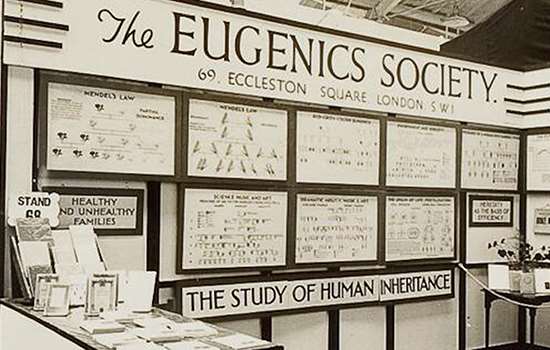RAMSAY, Sir William (1852-1916)
Plaque erected in 2011 by English Heritage at 12 Arundel Gardens, Notting Hill, London, W11 2LA, Royal Borough of Kensington and Chelsea
All images © English Heritage
Profession
Chemist
Category
Science
Inscription
Sir WILLIAM RAMSAY 1852-1916 Chemist Discoverer of the Noble Gases lived here 1887-1902
Material
Ceramic
Sir William Ramsay has justifiably been described as 'the greatest chemical discoverer of his time'. His discovery of five of the six inert or noble gases - argon, helium, krypton, neon and xenon - brought him international recognition and in 1904 he become the first Briton to be awarded the Nobel Prize for Chemistry. Ramsay's discoveries continue to have a major technological impact on our daily lives, from the neon illuminating advertising signs to the xenon that triggers photographic flash bulbs.
Born in Glasgow, Ramsay came from a long line of scientists on both sides of the family; his father, William Ramsay, was a civil engineer and his uncle, Sir Andrew Ramsay (1814-91) was the first Professor of Geology at University College London. He showed a great interest in science from a young age and in his early teens experimented with making fireworks, using equipment and chemicals acquired by his father.
After graduating from Glasgow University and working with chemical analyst Robert Tatlock for eighteen months, Ramsay joined Dr Rudolph Fittig's laboratory at Tübingen University, Germany in 1871. It was here he completed his doctorate in organic chemistry. In 1872, at the age of twenty, he was appointed teaching assistant at Anderson College and then Glasgow University's chemistry department.
In 1880 Ramsay was appointed Professor of Chemistry at University College Bristol and a year later became Principal of the college. His enthusiasm for chemistry was so great he delivered over sixty lectures a year whilst also supervising the laboratory. In this time he turned his attention to physical chemistry and laid the foundations for his later work on noble gases becoming deeply immersed in experiments to establish molecular volumes of elements at boiling point.
Work of a Lifetime
1887 saw Ramsay's appointment to the Chair of Chemistry at University College London. In a few years he transformed the facilities into the foremost research laboratory in the country and in 1894 embarked on his most important work. Prompted by Lord Rayleigh's discovery of differences in the density of atmospheric and chemical nitrogen, the two men independently discovered a hitherto unknown gas. They named the gas argon, meaning "the lazy one" due to its apparent lack of chemical activity, the first of the five gases Ramsay was to discover. Their results created great excitement in the scientific world and they were awarded the Smithsonian Institution's Hodgkins Prize later that year.
From 1895 Ramsay would spend the next three years refining his experiments and techniques to prove his theory of the existence of a whole group of inert gases, eventually adding a new column to the periodic table. In 1904 he was awarded the Nobel Prize for Chemistry, and Rayleigh was honoured with the Nobel Prize for Physics. Ramsay's pioneering research brought him many other honours: he was made Officier de la Legion d'Honneur (1896), Knight of the Order of the Bath (1902), and Knight of the Prussian Order of Merit (1911). A Fellow of the Royal Society since 1888, he also served as President of the Society of Chemical Industry (1903-4) and President of the British Association for the Advancement of Science (1911).
12 Arundel Gardens, Notting Hill, W11
12 Arundel Gardens, Notting Hill, was Ramsay's family home for fifteen years and it was while living at this address that Ramsay made his sensational discoveries of the noble gases. He lived with his wife Margaret Buchanan, who he married in 1881, and their two children and by all accounts it was a happy home. Soon after moving in, he wrote to his aunt that, "our home gives great satisfaction" and on his journey to work "I go to town on a bicycle! Right along the Bayswater Road to Oxford, and to Gower Street. This morning I was at College in eighteen minutes from the house."
It was in his study at home where he and his colleague Morris Travers wrote a joint paper for the Royal Society on their discovery of neon. Travers recalled that Ramsay's study: "like his laboratory; was always somewhat in disorder".
"A Groundbreaking Chemist"
Dr Andrea Sella, Inorganic Chemist at UCL Chemistry Department, and proposer of the plaque, said:
"Ramsay was a groundbreaking chemist and built up an outstanding research department at UCL. Nicknamed "the Chief", he was an inspirational teacher and revered by his students. He maintained that his greatest contribution to science was not the chemistry but the chemists that he had produced."
English Heritage blue plaques historian Dr Susan Skedd said:
"Although Ramsay attributed his success to 'pure luck and pegging away', it is universally accepted that his genius for experimentation greatly advanced our understanding of chemistry. It is wonderful to be able to honour his work and contribution to science with a blue plaque".
Nearby Blue Plaques
More about blue plaques
-

Eugenics in Britain
Find out more about the controversial and changing ideas about eugenics, and some of the figures with blue plaques who supported or opposed it.
-

Support the blue plaques scheme
Every blue plaque, from its research to unveiling, is funded by donations. Find out how you can help support the scheme.
-

Search for a Plaque
Use our search function to look for someone from history, or browse by category or location.